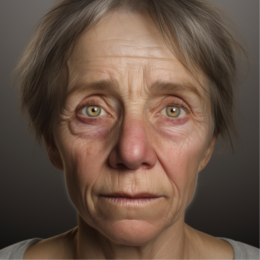Navigating the Complex Path to Diagnosing Multiple Sclerosis

Multiple Sclerosis (MS) is a neurological condition that affects millions of people worldwide. The complexity of the disease often raises the question: how is multiple sclerosis diagnosed? This article aims to provide a detailed guide on the diagnostic process, from initial symptoms to advanced diagnostic techniques.
Clinical Evaluation
Initial Symptoms and Their Variability
The first hurdle in diagnosing MS is the wide range of initial symptoms. These can include fatigue, numbness, vision problems, and muscle weakness. The variability often leads to misdiagnosis or delayed diagnosis, making it crucial for patients to consult a neurologist early on.
The Role of the Neurologist in Diagnosis
A neurologist is often the first specialist consulted for diagnosing multiple sclerosis. They conduct a thorough medical history and symptom analysis, which serves as the foundation for further diagnostic tests.
Patient Medical History and Symptom Analysis
A detailed medical history is crucial. The neurologist will ask about any family history of MS or other autoimmune diseases, previous symptoms, and the duration and severity of current symptoms.
Physical Examination and Neurological Assessment
The neurologist will perform a comprehensive physical examination, including neurological assessments, to check for impairments in function such as reflexes, strength, and coordination.
Facts and Statistics:
MS typically presents in young adults aged 20 to 30 years.
Diagnostic Criteria
McDonald’s Criteria and Its Significance
The McDonald Criteria serves as the gold standard for how to diagnose multiple sclerosis. It incorporates MRI findings, clinical assessments, and additional data like CSF analysis to provide a comprehensive diagnostic framework.
Revisions and Updates in MS Diagnosis Criteria
The McDonald Criteria have been updated to include advancements in MRI techniques and the latest understanding of the disease, making the diagnosis more accurate than ever.
The Importance of a Multifaceted Approach
Diagnosing MS is not straightforward. It requires a multifaceted approach that combines clinical evaluation, imaging tests, and CSF analysis to arrive at a conclusive diagnosis.
Facts and Statistics:
Diagnosis is often made based on the 2017 McDonald Criteria.
Neuroimaging
Magnetic Resonance Imaging (MRI) in MS Diagnosis
Types of MRI Scans Used: Conventional and functional MRIs are commonly used.
Detection of Lesions and Their Characteristics: MRI can detect lesions in the brain and spinal cord, which are indicative of MS.
Other Imaging Techniques
Optical Coherence Tomography is another imaging technique used to examine the retina, although it’s less commonly used than MRI.
Facts and Statistics:
Those with brain lesions have a 60–80% chance of receiving an MS diagnosis within a few years.

Cerebrospinal Fluid Analysis
This procedure involves extracting a small amount of CSF for analysis. It’s often done to confirm an MS diagnosis. CSF analysis can reveal abnormalities like increased immunoglobulin levels or the presence of oligoclonal bands, which are indicative of MS. The presence of oligoclonal bands is a significant indicator of MS and can be crucial in confirming a diagnosis.
Facts and Statistics:
Nearly one million people are living with MS in the United States, more than twice the original estimate
Evoked Potentials
Visual Evoked Potentials (VEP)
VEP tests measure the electrical activity in the brain in response to visual stimuli. They are used to check for demyelination in the optic nerves.
Auditory Evoked Potentials (AEP)
AEP tests are less commonly used but can provide additional diagnostic information, especially in cases where auditory symptoms are present.
Somatosensory Evoked Potentials (SSEP)
SSEP tests evaluate the pathways of sensory nerves and can be crucial in diagnosing MS.
Interpretation and Use in Diagnosing MS
Evoked potentials are interpreted alongside other diagnostic tests for a comprehensive diagnosis.
Facts and Statistics:
Approximately 85% of people receive a diagnosis of Relapsing-remitting MS (RRMS) at first.
Quick Poll
Blood Tests
Biomarkers and Their Potential Role in Diagnosis
Research is ongoing to identify biomarkers that can aid in MS diagnosis. These could revolutionize how MS is diagnosed, making blood tests a more prominent part of the diagnostic process.
Rule Out Other Conditions That Mimic MS
Blood tests can help rule out other conditions that have similar symptoms to MS, such as lupus or Lyme disease.
Ongoing Research on Blood-Based Diagnostic Markers
Studies are being conducted to find more reliable blood-based markers for MS, which could make the diagnostic process less invasive and more accurate.
Facts and Statistics:
About 50% of people with RRMS transition to Secondary progressive MS (SPMS) within a decade of the initial diagnosis.
Differential Diagnosis
Conditions That Can Mimic MS Symptoms
Several conditions, including lupus and Lyme disease, can mimic MS symptoms. Therefore, differential diagnosis is crucial to rule out other potential diseases.
Importance of Ruling Out Other Diseases
It’s crucial to rule out other conditions before confirming an MS diagnosis to ensure appropriate treatment.
Challenges in Distinguishing MS from Other Conditions
The overlapping symptoms with other diseases make differential diagnosis challenging, emphasizing the need for a multifaceted diagnostic approach.
Facts and Statistics:
A total of 2.8 million people are estimated to live with MS worldwide. The pooled incidence rate across 75 reporting countries is 2.1 per 100,000 persons/year, and the mean age of diagnosis is 32 years.
The Role of Neuropsychological Testing
MS can have a significant impact on cognitive and emotional well-being, affecting quality of life. Neuropsychological tests can provide a more comprehensive understanding of the cognitive and emotional impacts of MS, aiding in both diagnosis and treatment planning. These tests are often used in conjunction with other diagnostic methods for a more complete picture.
Facts and Statistics:
MS is the most common disabling neurological disease of young adults, with symptom onset generally occurring between the ages of 20 and 40 years.
Challenges in Diagnosing MS
The Variability of MS Presentation
MS symptoms can vary widely, making diagnosis difficult. This variability often leads to delayed diagnosis and treatment, emphasizing the importance of early intervention.
Misdiagnosis and the Importance of a Second Opinion
Due to the complexity of the disease and overlapping symptoms with other conditions, getting a second opinion is often recommended.
Diagnostic Challenges in Pediatric MS Cases
Diagnosing MS in children presents its own set of challenges due to the variability in symptoms and the lack of established diagnostic criteria.
Facts and Statistics:
MS can lead to physical disability, cognitive impairment, and decreased quality of life.
Emily’s Unfolding Mystery
Emily, a 32-year-old graphic designer, started experiencing fatigue and numbness in her limbs. After a series of tests and a second opinion, she was diagnosed with MS. Her story underscores the importance of a comprehensive approach to diagnosis.
Conclusion
The complexities surrounding the diagnosis of multiple sclerosis are gradually being unraveled thanks to cutting-edge advancements in medical technology and diagnostic criteria. While understanding what causes multiple sclerosis remains a challenging endeavor, these advancements are paving the way for more accurate, timely, and comprehensive diagnoses.
PLEASE SHARE YOUR EXPERIENCE AND THE COMMENTS BELOW, SO WE CAN HELP EACH OTHER WITH THE KNOWLEDGE YOU HAVE GAINED.
References
- Mayo Clinic. Diagnosis and Treatment. https://www.mayoclinic.org/diseases-conditions/multiple-sclerosis/diagnosis-treatment/drc-20350274#:~:text=There%20are%20no%20specific%20tests,thorough%20medical%20history%20and%20examination.
- National Multiple Sclerosis Society. How Is Multiple Sclerosis Diagnosed? https://www.nationalmssociety.org/Symptoms-Diagnosis/Diagnosing-MS
- National Insitute of Neurological Disorders and Stroke. Multiple Sclerosis. https://www.ninds.nih.gov/health-information/disorders/multiple-sclerosis





